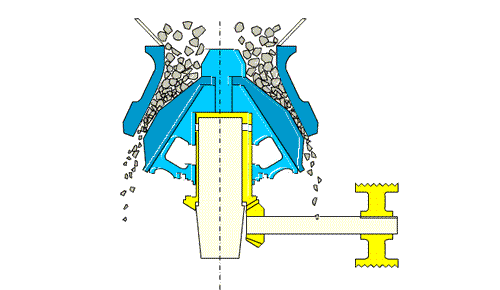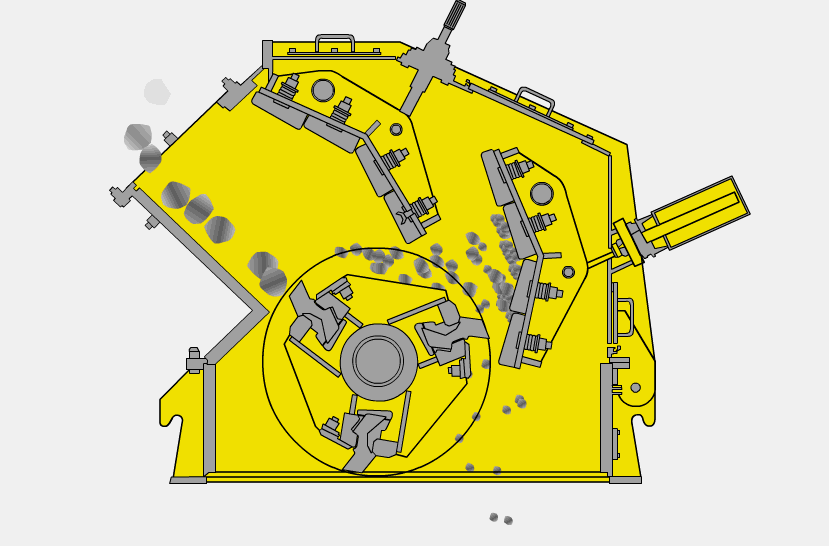As a relevant practitioner in the aggregate industry, we Eastman want to share some knowledge with you based on rich experience.
We have compared the pros and cons of many rock crushing equipment, and have received feedback from many users. So, we made this post to help you understand the difference between cone crusher and hammer crusher.
Before understanding the difference between those two major crushing machines, you first need to have a certain understanding of their basic crushing principle:
In simple terms, cone crusher uses lamination crushing, the mortar wall continuously moves toward the crushing wall, then squeezes the feed material between them, and crushes it to a suitable size.
While the hammer breaking adopts impact crushing, which is mainly broken by the impact, shearing, tearing, and mutual impact of materials.


By quickly review the working principle, now we can compare the difference between the two major crushers.
1, Applicable stage
The cone crusher is suitable for the medium and fine crushing stage, and is often used in the second and third breaks in the production line.
While the hammer crushers can be used for coarse crushing and sometimes fine crushing. For example, some aggregate plants use hammer crushers for simply one stage crushing.
Indeed, the hammer crusher can break materials at one time without secondary crushing, but it is more common in small and medium-sized production lines and the requirements for the final particle size are not high.
2, Processed materials
Cone crushing is suitable for processing high-hardness stone materials, such as iron ore, basalt, granite, cobblestone, etc. It is the ideal equipment for crushing hard ore.
Hammer breaking is suitable for processing medium and soft ores, such as limestone, coal gangue, dolomite, shale, etc.
You should properly note that hammer crusher can not and should not use to handle materials with high hardness, otherwise, the hammerhead will wear out quickly and you may need frequent repair and change the wearing parts, this will increase your costs a lot.
In our test, used a hammer crusher to break the granite will cause the hammerhead wearing parts’s lifetime shorten to 2 or 3 days.
3, Feeding size
Generally speaking, the cone crusher will have stricter requirements on the feed particle size, and the maximum feed particle size is about 300mm.
And the hammer crusher can be used for coarse crushing operations, and its maximum feeding particle size can reach 1200mm.
4, Discharge specifications
Cone crusher is often used to process 05, 12, 13, 46 stones, the output particle size is generally 10-50mm.
The hammer crusher can be coarsely crushed, finely crushed, and sand-made, with a large range of output particle size.
According to the different finished products, it can be divided into coarse and finely crushed, and sand under 5mm.
5, Sand production line
For hard rock aggregate, cone crushers are often used as a second or third breaking device, followed by sand making machine for sand making or shaping.
In the discharge specifications comparing, we noted that the hammer crusher can be used to make sand.
And yes, actually it belongs to the traditional sand making processing machine. But now it used less often.
Although the process is simple, it has many shortages, for example, the yield is low, and the final aggregate product may easily be crushed or product micro cracks. This poor quality will affect sales and prices, so the hammer crusher now is often used as an auxiliary sand making equipment.
6, Costs
Considering the equipment price, the input cost of a hammer crusher is lower than a cone crusher.
Although the initial purchase cost is not high, the replacement of the wearing parts such as hammerheads in the later stage is also a large cost, especially for crushing medium-hard and above materials.
Relatively speaking, the wear parts of the cone crusher have a longer service life and less investment in the later stage.
summary
Hammer crusher and cone crusher are both classic equipment in aggregate crushing and are both widely used. This article briefly analyzes the difference between those two types of crushing machines in 6 factors, and we hope it can help you.
In addition, it should be noted that what we call hammer crusher is a product in the traditional sense, because in many regions, small and medium-sized production lines still use this type of equipment because the crushing ratio is large and the price is low.
However, at present, many hammer breaking manufacturers like our Eastman have innovated on the basis of traditional hammer crusher, such as heavy hammer crusher, biaxial hammer breaking, etc.
This improved equipment combined the crushing, fine crushing and sand-making, and have better performance also with a higher price.